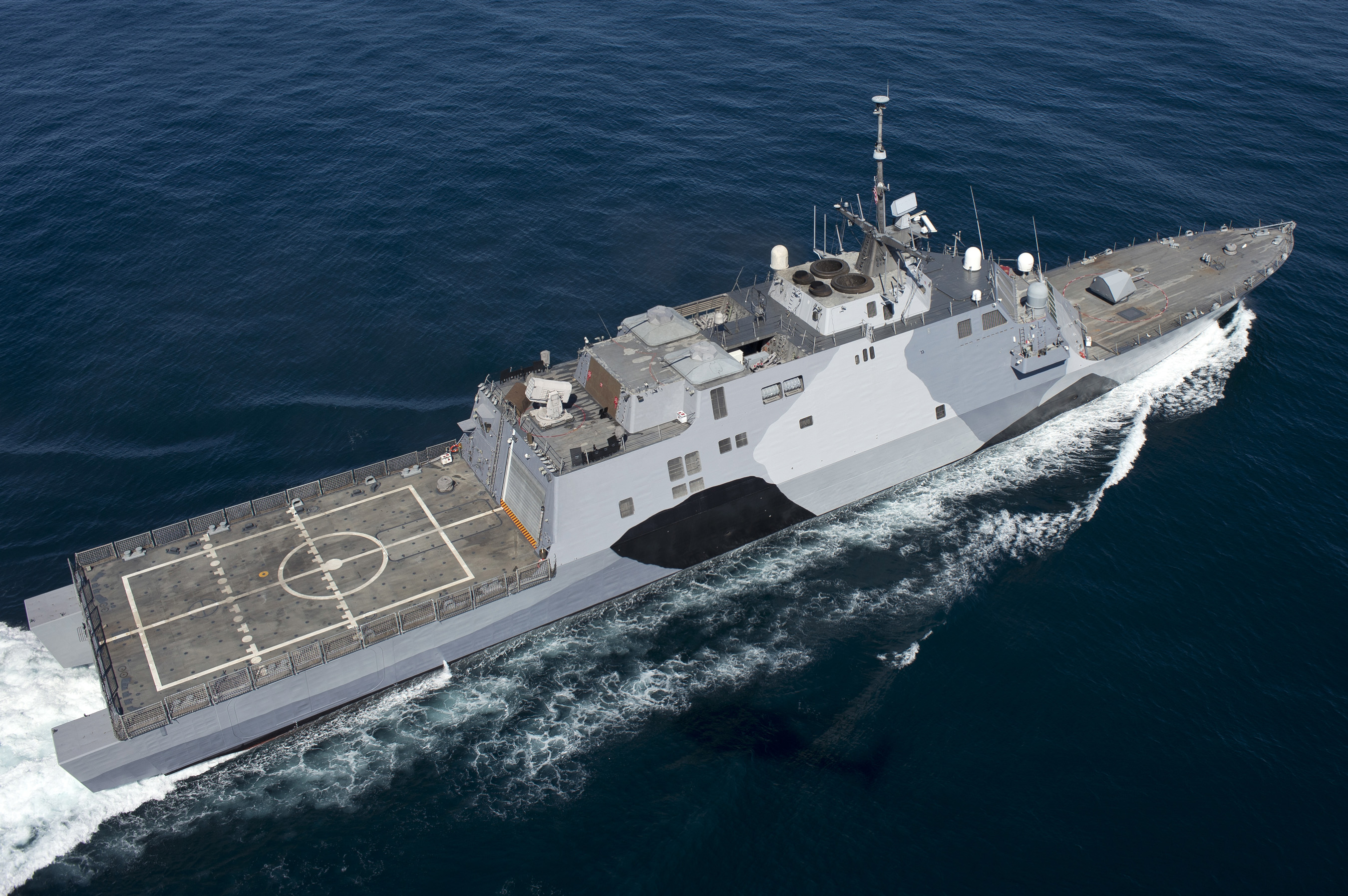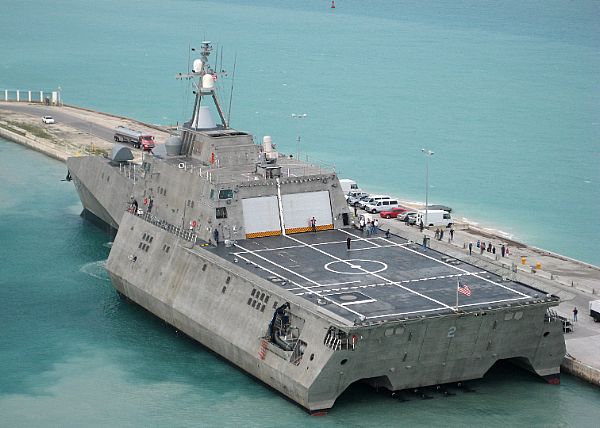A new aviation landing system is lighting the way to the future of helicopter landings aboard air-capable and amphibious assault ships.
Test pilots from Naval Air Station Patuxent River successfully employed the Advanced Stabilized Glide Slope Indicator (ASGSI) to approach and land on the USS Fort Worth (LCS 3) in San Diego this fall.
 |
| LCS-3 Starboard Quarter |
 |
| LCS-2 |
Compared to SGSI, ASGSI provides night vision device (NVD) compatibility with the addition of pulse coding. Because NVDs eliminate color distinction, ASGSI indicates approach slope with pulsing or flashing beams of light; fast rapid flashes signal a low approach, slow flashes signal a high approach and a solid beam appears with a perfect glide slope, Hartig said.
“The intent of this night vision capability system is to provide greater operational availability and an improved level of accuracy for pilots,” said Cmdr. Tony Hernandez,PMA-251fleet liaison officer. “I think fleet pilots will find this a welcomed addition, one that provides enhanced visual cues that will only increase safe landings.”
Located on a platform just above the hangar, ASGSI uses electromechanical stabilization that automatically adjusts to the ship’s pitch and roll. The system replaces hydraulic powered stabilization with enhanced electromechanical technology that reduces environmental and maintenance hazards.
Hartig said ASGSI also utilizes LED lighting that can be adjusted based on pilot requirements via the Aviation Lighting System Control Panel Set (ALS-CPS) located in the helicopter control station. This allows operators to adjust lighting brightness for adverse weather to allow for a smooth landing.

No comments:
Post a Comment